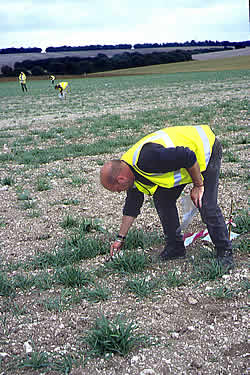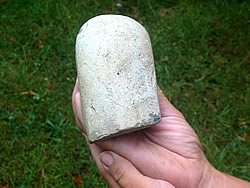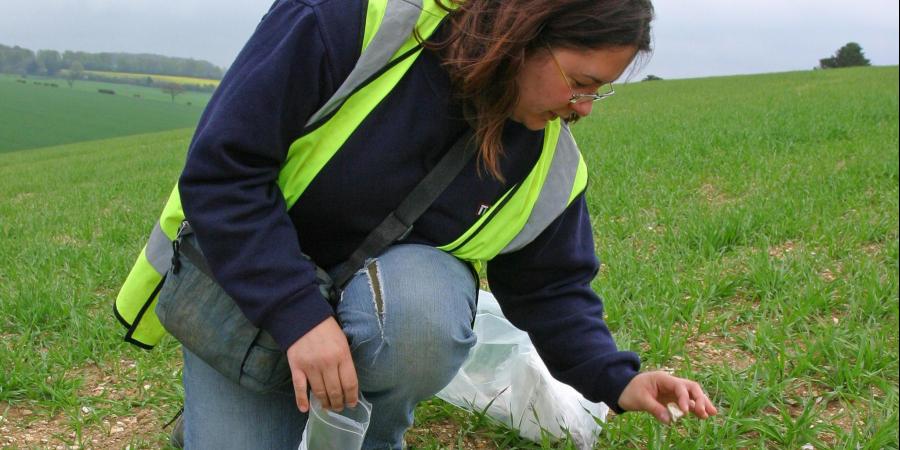The landscape around Stonehenge and Avebury, two of Europe’s most famous prehistoric monuments, yielded more of its secrets during a new investigation. Wessex Archaeology staff spent three weeks walking 90 hectares (222 acres) of private land around the monuments to look for prehistoric flint.
A polished stone axe head from the Neolithic period, dating to around 3,000BC-2,500BC, and a leaf shaped arrowhead from the same period were found near Stonehenge. This type of axe, which usually had a wooden haft, would have been used to cut down trees, though this axe head has not been used. The stone it was made from is not local.

The project is part of a plan to improve the conservation of the area by turning land being used to grow crops into grassland pasture for animals. This will mean that the land is not ploughed anymore, a process that can destroy important archaeological remains.
The field walking was carried out just before the land reverted to pasture, as this was the last opportunity to pick up artefacts brought to the surface by the plough before the grass grew. The work, organised by the Stonehenge and Avebury World Heritage Site Officers, was funded by English Heritage.
The land being walked is all within a kilometre of either Stonehenge or Avebury and included West Kennet Long Barrow, West Overton and Beckhampton Hill, all near Avebury, and Durrington Down Farm, Normanton Down Barrows and North Kite enclosure, all near Stonehenge. This area is important for its unusual concentration of prehistoric remains, including hundreds of barrows – earthen burial mounds – dating to the Bronze Age (2,400BC - 700BC).

A special grant is provided to the farmers whose land forms part of the Stonehenge and Avebury World Heritage Site by DEFRA, the Department for Environment, Food and Rural Affairs, to change the use of the land in archaeologically rich areas. The scheme is also intended to improve the ecology of the area by providing extended chalk grass habitats for birds, insects and wild flowers.
Andy Crockett, project manager for Wessex Archaeology, said: “The axe head is a very interesting find because it relates to a period in our past when farmers first started to chop down trees to start growing crops and keeping livestock.” Andy led a team of five archaeologists who worked on the project.
Isabelle Bedu, the Stonehenge World Heritage Site Co-ordinator, said: “The World Heritage Site Committee would like to thank the local farmers who have entered the grass restoration programme and allowed access for the field walking. These projects are a major step towards the long-term conservation of the Stonehenge landscape.”

